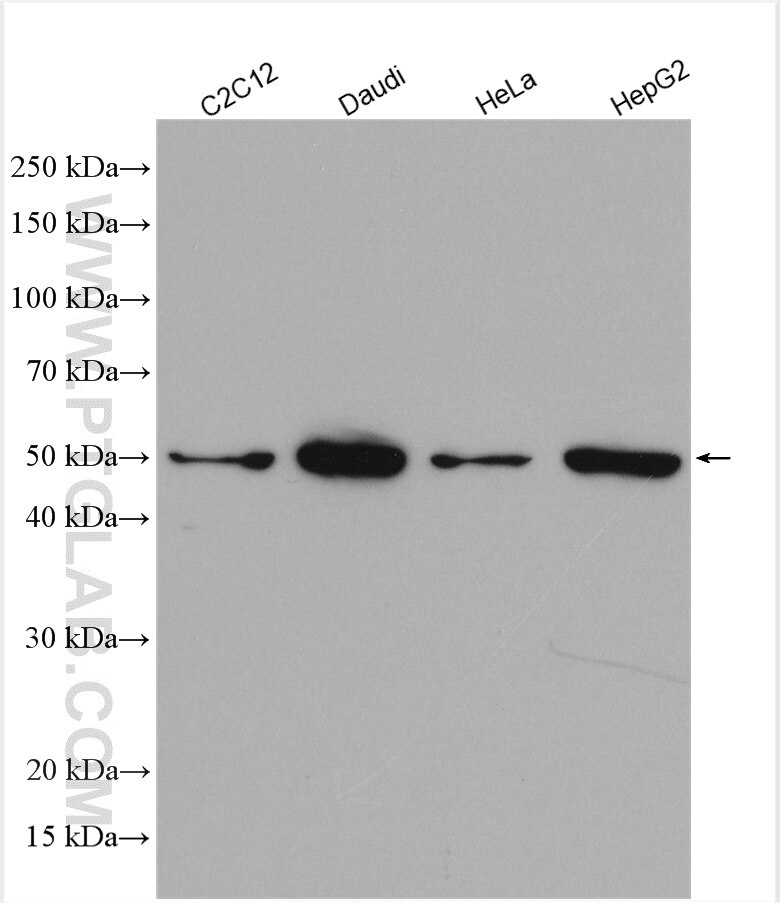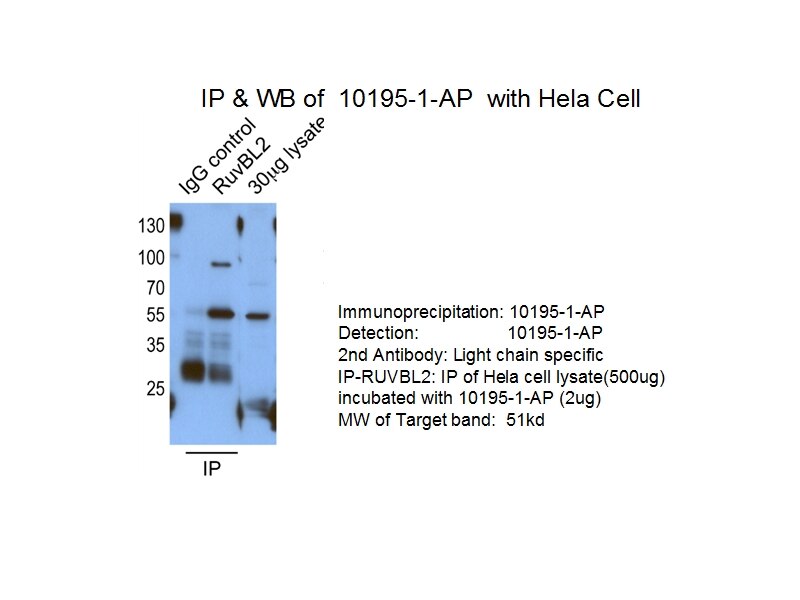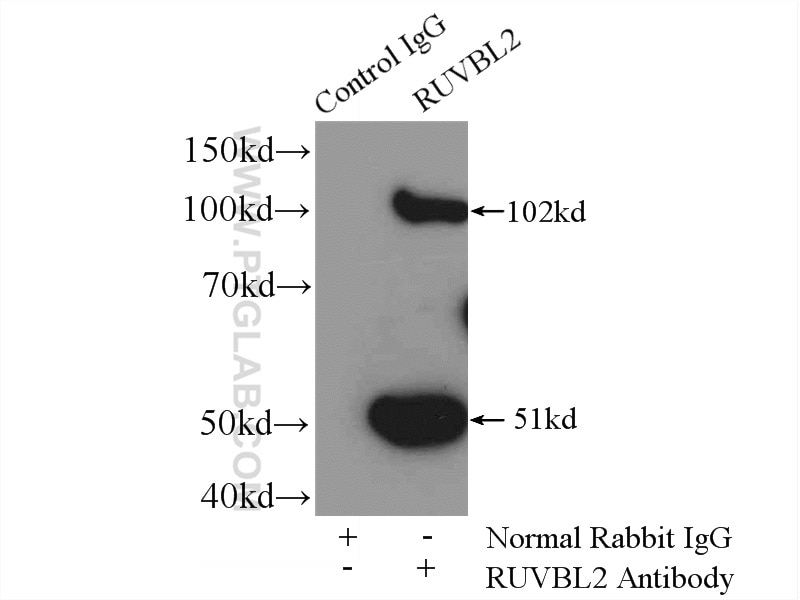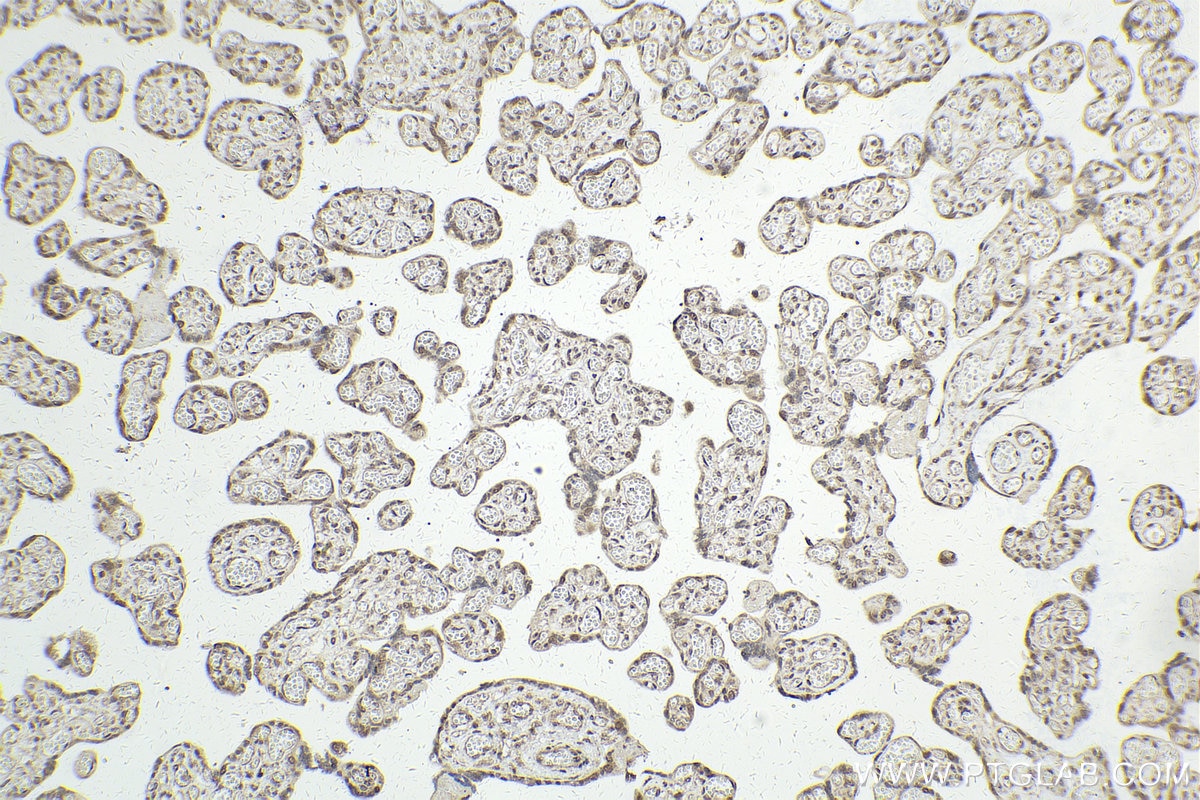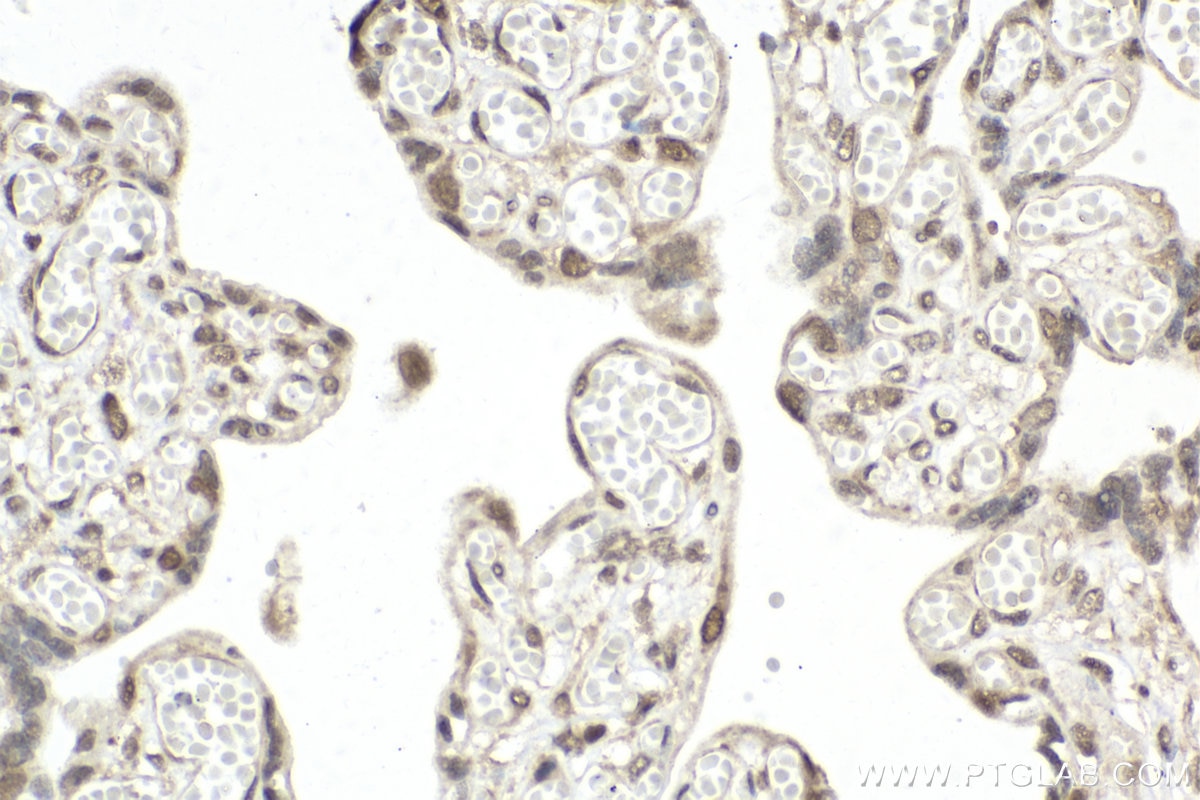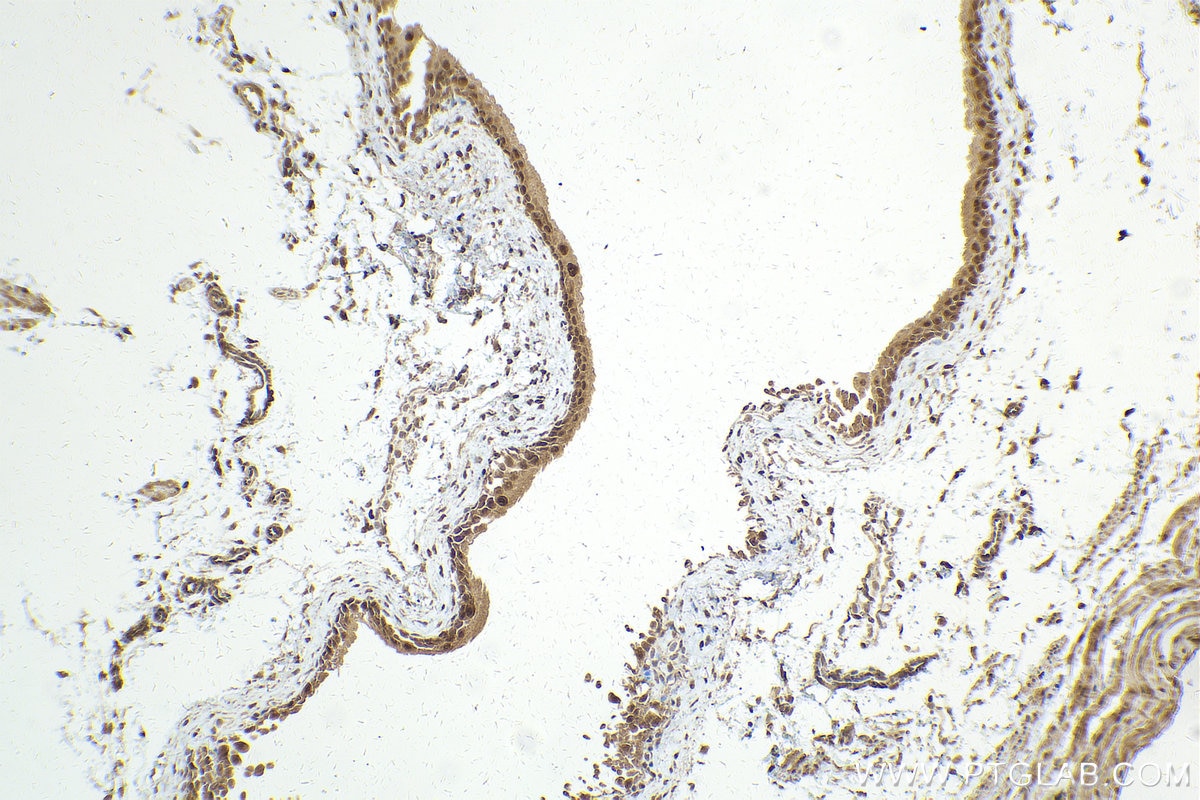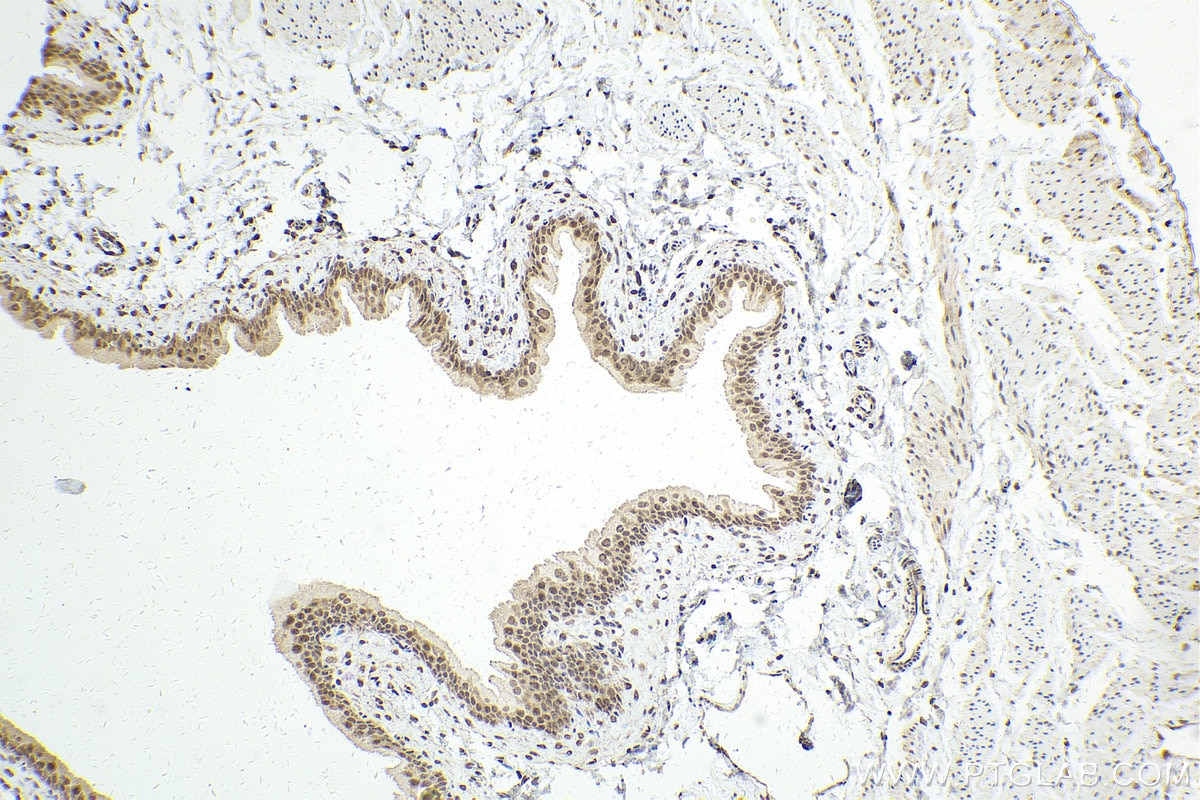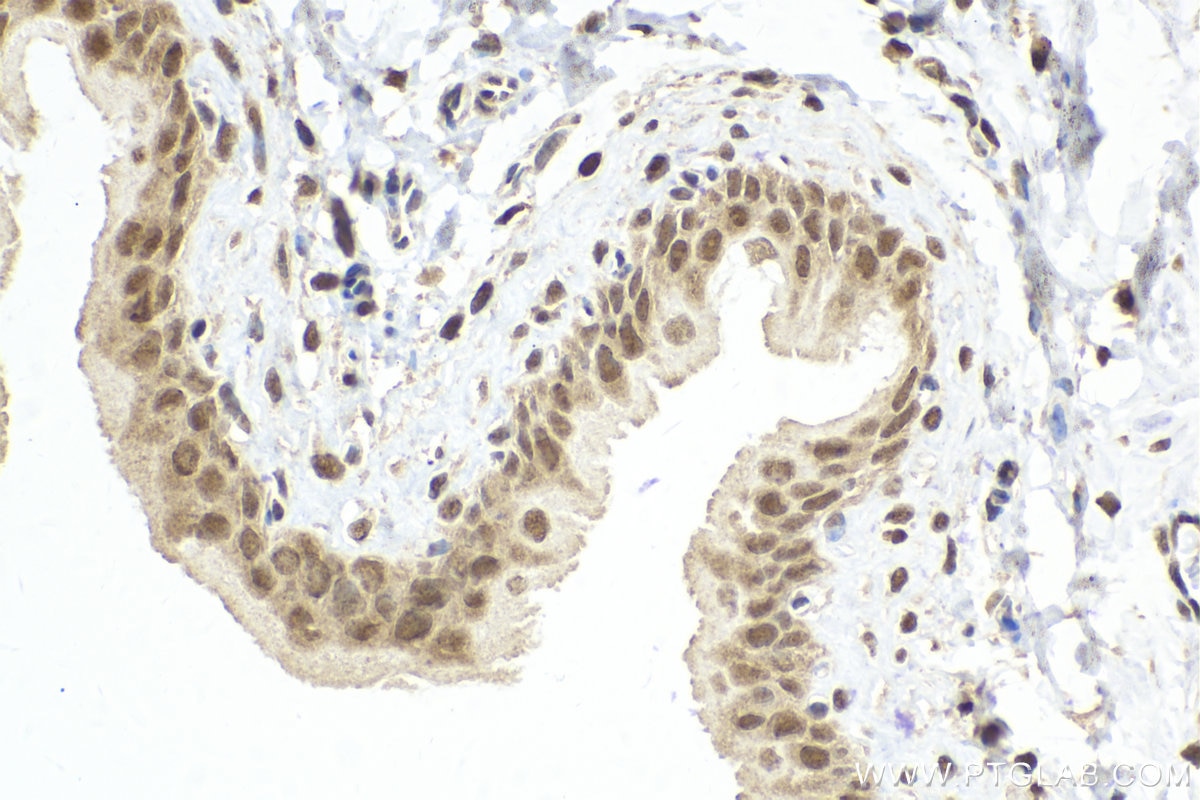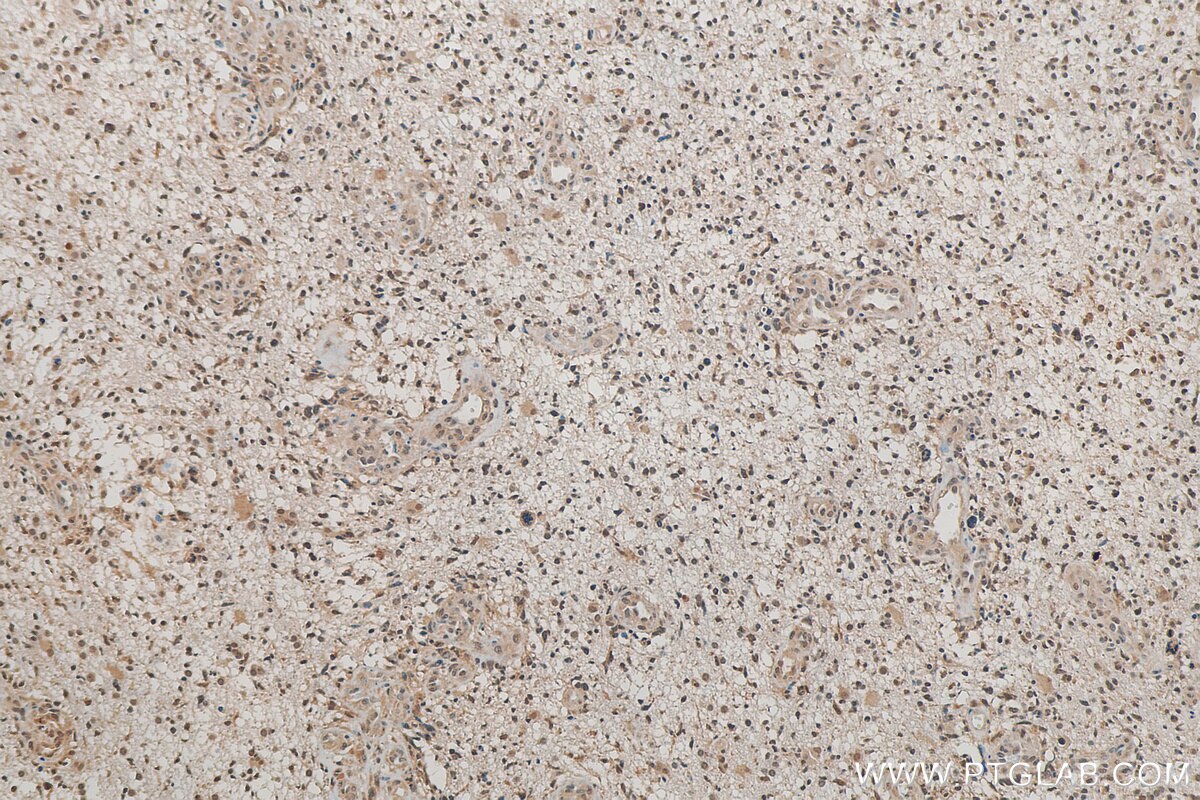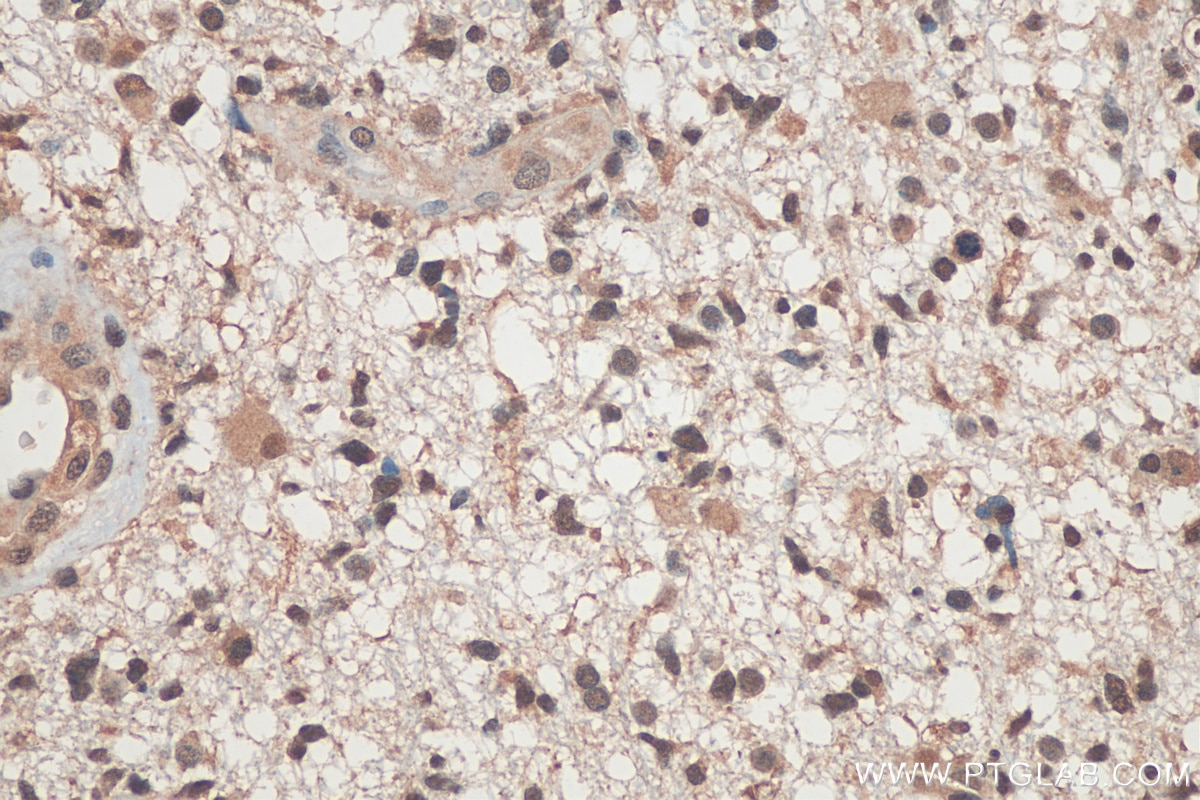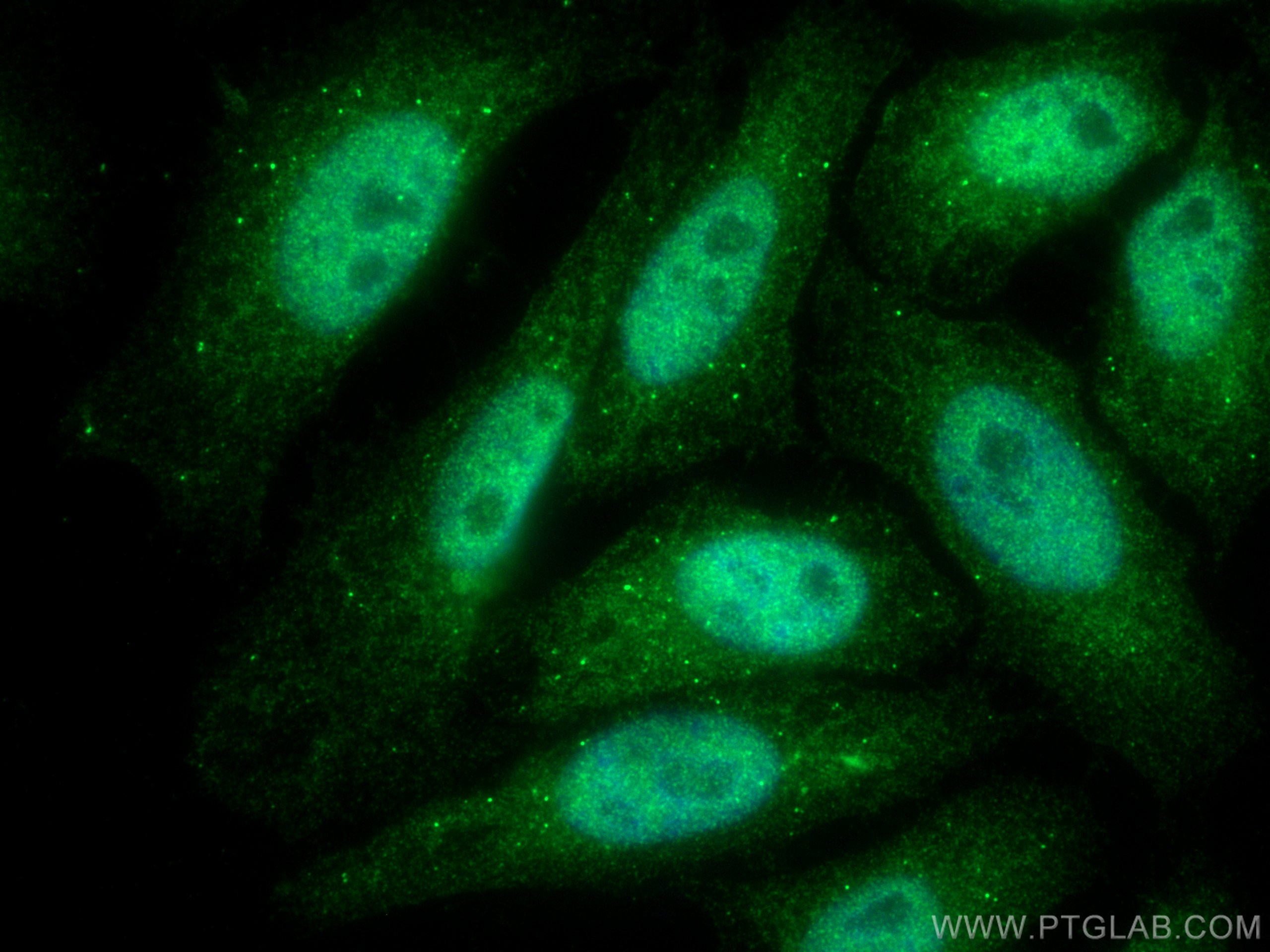- Phare
- Validé par KD/KO
Anticorps Polyclonal de lapin anti-RUVBL2
RUVBL2 Polyclonal Antibody for WB, IHC, IF/ICC, IP, ELISA
Hôte / Isotype
Lapin / IgG
Réactivité testée
Humain, souris
Applications
WB, IHC, IF/ICC, IP, ELISA
Conjugaison
Non conjugué
N° de cat : 10195-1-AP
Synonymes
Galerie de données de validation
Applications testées
| Résultats positifs en WB | cellules C2C12, cellules Daudi, cellules HeLa, cellules HepG2 |
| Résultats positifs en IP | cellules HeLa, tissu cérébral de souris |
| Résultats positifs en IHC | tissu vésical de rat, tissu de gliome humain, tissu placentaire humain, tissu vésical de souris il est suggéré de démasquer l'antigène avec un tampon de TE buffer pH 9.0; (*) À défaut, 'le démasquage de l'antigène peut être 'effectué avec un tampon citrate pH 6,0. |
| Résultats positifs en IF/ICC | cellules HepG2, |
Dilution recommandée
| Application | Dilution |
|---|---|
| Western Blot (WB) | WB : 1:500-1:2000 |
| Immunoprécipitation (IP) | IP : 0.5-4.0 ug for 1.0-3.0 mg of total protein lysate |
| Immunohistochimie (IHC) | IHC : 1:250-1:1000 |
| Immunofluorescence (IF)/ICC | IF/ICC : 1:200-1:800 |
| It is recommended that this reagent should be titrated in each testing system to obtain optimal results. | |
| Sample-dependent, check data in validation data gallery | |
Applications publiées
| KD/KO | See 5 publications below |
| WB | See 19 publications below |
| IHC | See 3 publications below |
| IF | See 3 publications below |
| IP | See 2 publications below |
Informations sur le produit
10195-1-AP cible RUVBL2 dans les applications de WB, IHC, IF/ICC, IP, ELISA et montre une réactivité avec des échantillons Humain, souris
| Réactivité | Humain, souris |
| Réactivité citée | Humain, souris |
| Hôte / Isotype | Lapin / IgG |
| Clonalité | Polyclonal |
| Type | Anticorps |
| Immunogène | RUVBL2 Protéine recombinante Ag0253 |
| Nom complet | RuvB-like 2 (E. coli) |
| Masse moléculaire calculée | 51 kDa |
| Poids moléculaire observé | 51 kDa |
| Numéro d’acquisition GenBank | BC000428 |
| Symbole du gène | RUVBL2 |
| Identification du gène (NCBI) | 10856 |
| Conjugaison | Non conjugué |
| Forme | Liquide |
| Méthode de purification | Purification par affinité contre l'antigène |
| Tampon de stockage | PBS with 0.02% sodium azide and 50% glycerol |
| Conditions de stockage | Stocker à -20°C. Stable pendant un an après l'expédition. L'aliquotage n'est pas nécessaire pour le stockage à -20oC Les 20ul contiennent 0,1% de BSA. |
Informations générales
RuvB-like 2 (E. coli) (RUVBL2, synonyms: ECP51, TIP48, CGI-46, TIP49B) is the second human homologue of the bacterial RuvB gene. Bacterial RuvB protein is a DNA helicase essential for homologous recombination and DNA double-strand break repair. Functional analysis showed that RUVBL2 has both ATPase and DNA helicase activities.
Protocole
| Product Specific Protocols | |
|---|---|
| WB protocol for RUVBL2 antibody 10195-1-AP | Download protocol |
| IHC protocol for RUVBL2 antibody 10195-1-AP | Download protocol |
| IF protocol for RUVBL2 antibody 10195-1-AP | Download protocol |
| IP protocol for RUVBL2 antibody 10195-1-AP | Download protocol |
| Standard Protocols | |
|---|---|
| Click here to view our Standard Protocols |
Publications
| Species | Application | Title |
|---|---|---|
Mol Cell Metabolic stress controls mTORC1 lysosomal localization and dimerization by regulating the TTT-RUVBL1/2 complex. | ||
Sci Adv Synthetic lethality by targeting the RUVBL1/2-TTT complex in mTORC1-hyperactive cancer cells.
| ||
Nat Commun Inhibition of the CDK2 and Cyclin A complex leads to autophagic degradation of CDK2 in cancer cells. | ||
J Clin Invest circular RNA cia-MAF drives self-renewal and metastasis of liver tumor-initiating cells via transcription factor MAFF. | ||
Sci Adv ETV7 is an essential component of a rapamycin-insensitive mTOR complex in cancer. | ||
Avis
The reviews below have been submitted by verified Proteintech customers who received an incentive for providing their feedback.
FH Deyong (Verified Customer) (03-11-2022) | It worked well in H1 human embryonic stem cells.
|
